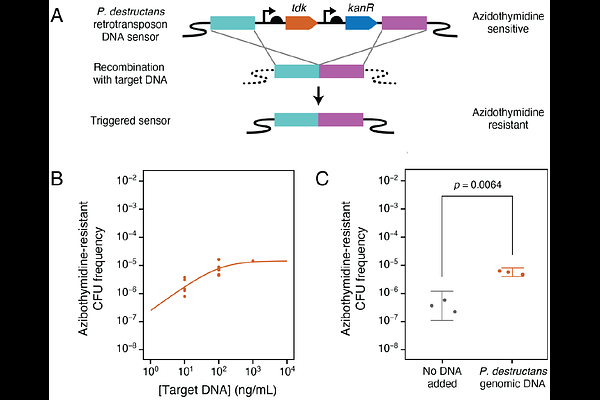Engineered Acinetobacter baylyi ADP1-ISx cells are sensitive DNA biosensors for antibiotic resistance genes and a fungal pathogen of bats

Engineered Acinetobacter baylyi ADP1-ISx cells are sensitive DNA biosensors for antibiotic resistance genes and a fungal pathogen of bats
Chuong, J.; Brown, K. W.; Mishler, D. M.; Gifford, I.; Barrick, J. E.
AbstractNaturally competent bacteria can be engineered into platforms for detecting environmental DNA. This capability could be used to monitor the spread of pathogens, invasive species, and resistance genes, among other applications. Here, we create Acinetobacter baylyi ADP1-ISx biosensors that detect specific target DNA sequences through natural transformation. We tested strains with DNA sensors that consisted of either a mutated antibiotic resistance gene (TEM-1 bla or nptII) or a counterselectable gene flanked by sequences from the fungus Pseudogymnoascus destructans, which causes white-nose syndrome in bats. Upon uptake of homologous DNA, recombination restored antibiotic resistance gene function or removed the counterselectable gene, enabling selection of cells that sensed the target DNA. The antibiotic resistance gene and P. destructans biosensors could detect as few as 3,000 or 5,000,000 molecules of their DNA targets, respectively, and their sensitivity was not affected by excess off-target DNA. These results demonstrate how A. baylyi can be reprogrammed into a modular platform for monitoring environmental DNA.